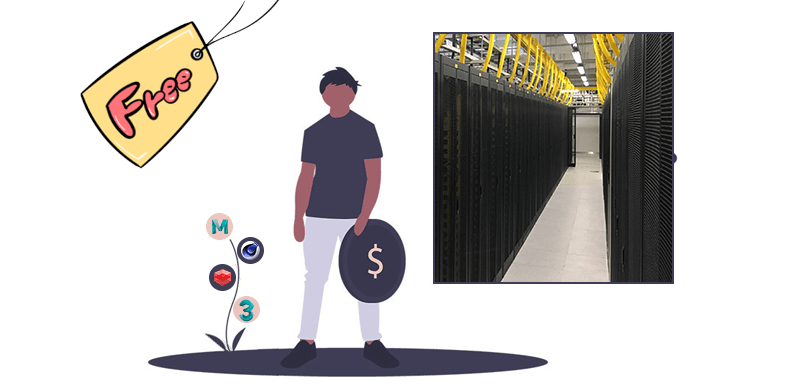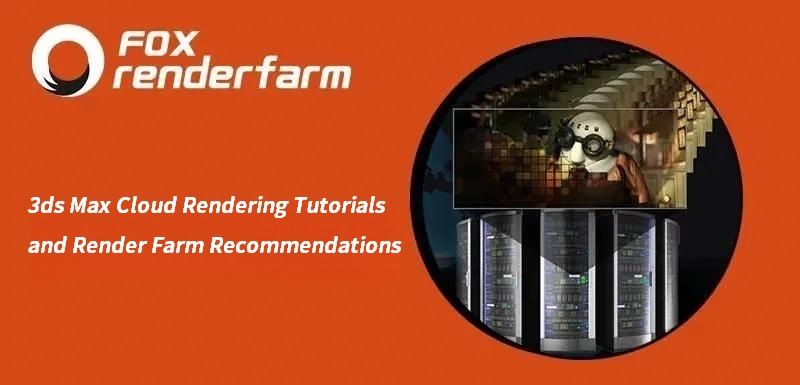How to Create a Classroom Scene With 3ds Max and Zbrush

This tutorial brings about the scene production process of "Classroom", and the tutorial was organized by the best online render farm, Fox Renderfarm. The content will introduce in detail the process from resource allocation to model making, then drawing textures, and finally rendering. The software used includes 3ds Max 2018, Zbrush, Substance Painter, Marmoset Toolbag3, etc.

Production Process
- Resource Allocation
Because of the large number of models in the scene, It is necessary to analyze the scene first, disassemble it into separate resources, and then allocate them to each member for production, and finally build and integrate them. This will greatly increase efficiency.
The specific division of labor is as follows,




- Modeling
Before making the medium model, we must first build a simple model to determine the approximate size and location of each object. The focus of this step is the accuracy of the overall proportion and position, so there is no need to spend too much time on the model.

In order to better grasp the position and size, you can find the perspective angle of the original painting by adjusting the position and field of view. At this time, create a camera and press c to call up the camera for easy matching.
After the simple model is built, the next steps can be made according to the assigned tasks. The production process of the three representative models will be introduced below. I hope everyone will like it.
- Asset production
There are a lot of assets in it, so here are a few to discuss the production process.
Case 1: Broom
Mid-poly modeling
The manufacturing process of the mid-poly model is relatively simple, using a cylinder and a sphere to complete, making the broom simple and large.

In the process of making, pay attention to the overall wiring distribution of the model to be even, so that it can be engraved in zb later.
High-poly model modeling
After the mid-poly model is completed, the modeling of the high-poly is carried out. First, analyze the shape of the broom. The broom in life is generally not very regular and will have a messy posture, so the details of the broom wire will be relatively large.
So when sculpting, I used the move brush to make a simple adjustment to the large irregular direction, and used the standard brush to simply make a rough sculpting.

The next step is to sculpt meticulously. At this time, I used the ClayBuildup and Standard brushes to depict the details. In some areas with larger cut surfaces, I also used the ClayPolish brush to make the edges cleaner.

Finally, use the CurveStrapSnap brush to pull out the rope on the broom, and then adjust the shape to make it more suitable for the shape of the broom wire, so that the entire high-poly modeling is completed.
Low-poly model topology
Because the shape of this broom is relatively simple, it is also relatively easy when the topology is low mode. However, due to the large changes in the appearance of the high-poly model, the mid-poly model cannot be used for production, so I re-topped a low-poly model in TopoGun3.

UV unfolding
Because it is a single object, it is easier to expand the UV, and the model is symmetrical, which makes it more convenient to make textures. There are other models in the blank part of the UV in the picture below, which are not so big to avoid misleading, and the UV still maintains a high utilization rate.

Texture making
First of all, each texture was baked in SP.

Next, I used a shader similar to hair as the inherent color and texture.

Then added a layer of color change and a layer of dirt on it to achieve the effect of distressing.

The part of the broom wire is basically completed, so I selected the line on the broom and gave it a unique color separately.

Three fill layers are used here to give different colors, and only the intrinsic color and height channels are turned on. The next thing to do is the part of the broom handle. I first gave a wood shader a natural color.
Then made some slight color changes on it.
Finally, some cracks and dirt were added to enrich the effect.

In this way, the materials of the three structures of the broom are finished. The render is as follows.

Case 2: Schoolbag
Mid-poly modeling
The modeling is mainly based on the grasp of the proportion, and the main shape and size of the low-poly model are made through the reference of the original painting.

High-poly modeling
For the production of the high-poly model, I used ZBrush to carve some parts to make it more like leather. In fact, the production of the high-poly model is relatively simple. For most of the details, I prefer to make it with Substance Painter. The advantage of making in Substance Painter is that it is convenient and quick. There are many ways to make models that are not limited to just one.

Material production
In order to save UV, before importing Substance Painter, I chose to put together a few small objects to make. Here I mainly explain the production of leather schoolbags.
First, you can make small screws with normal thread to make the high model rich, and then give the background color to make damage.

Secondly, the details are further perfected. The leather itself is not particularly smooth, so the unevenness of the leather should be made.

Finally, in order to better integrate with the scene, it is necessary to make the schoolbag dirty and dust more obvious, which will be more abrupt when viewed alone, but for the overall scene, the details of a single object can be appropriately made more obvious, so that it will not be particularly flat in the scene.

Case 3: Desks and Chairs
In addition to the atmosphere, the walls and floors of the scene, all kinds of objects in the classroom also need to conform to the atmosphere. Take the desks and chairs that occupy the most space for example. The main difficulty in making is how to integrate the color of the texture into the atmosphere. Since the model of this object is simple to make, I won’t repeat it here.
The specific operation process of the map is as follows (due to the similar process, only the table is used for display),
First, we create a filling layer, and create a natural color based on the color and material of the table and chair in the original painting. Add a fixed shader
Fill the metal part with gray that is similar to the metal color of the original image and then adjust the metal degree and roughness. Add dark and bright stains; Create a fill layer, right-click to create a filled black mask, add a fill, and select the dirty trace below.
The effect after adding dirty marks is as follows,

Add wood grain strength and metal roughness.
Create a fill layer, right-click to create a filled black mask, add a fill, and select the dirty trace below.
Add different basic colors to the filling layer to create a staggered effect of wood grain colors, and select penetration for the blending mode.
On the metal side, you can choose to add dirt again or directly make the final effect. The effect after this step is completed is as follows:

Finally, add a layer of shabby dirt that matches the atmosphere of the classroom. Create a fill layer, right-click to create a filled black mask, add a generator, and select the generator below.
Parameter selection (wood grain)
Add sharpening to the metal, create an empty layer, right-click to add sharpening, and the sharpening intensity is 0.5.
Then add dirt, create a fill layer, right-click to create a filled black mask, add a generator, and select the generator below.
Parameter selection (metal)
The final effect after adding is shown in the figure:

Rendering
The software used in this rendering is the eight monkey engine, which has a good display of the effect of the light map. Before importing the file, you need to unify the HDR environment used by the sky option in the eight monkeys with the environment used by the sp software to make the material. The environment used this time is panorama.

After importing the model, paste the corresponding texture map. In order to make the subsequent lighting effect better, we reduce the intensity of the ambient light and use a pure color for the background.

The next step is lighting. Three lights were used this time, which were illuminated into the house from three different angles.

The simulated indoor light on the right side uses a yellowish warm light source. Through the adjustment of the illumination direction and angle, the indoor objects can be projected to conform to the environment atmosphere. Under the light shape option, adjust the shadow parameters to make the outline clear and the details more detailed.

The parallel light used on the left is irradiated from the window. It uses a light source with a cooler tone, which is in contrast with the light source on the right. This time we slightly increase the shape parameter to make the shadow edge slightly blurred.

Finally, we open the GI, slightly adjust the color curve under the camera option, darken the dark part, and brighten the bright part.

Then start rendering, and the final effect is as shown in the figure:

Thank you very much for taking the time to read to the end of the article. I hope that the sharing of this tutorial can be helpful to you.
Recommended reading
Top 9 Best And Free Blender Render Farms of 2025
2024-12-30
What is Jibaro? Reveal the Story and Techniques Behind the Production of Jibaro "Love, Death & Robots"
2025-11-03
Top 10 Free And Best Cloud Rendering Services in 2026
2025-12-25
9 Best & Free 3D Rendering Software for Architects & Designers
2025-12-08
Top 8 After Effects Render Farm Recommended of 2025
2025-02-10
Easy Cel Shading Tutorial for Cartoon in Blender Within 2 Minutes
2025-11-26
Shocked! The Secret Behind Using 3D to Make 2D Animation was Revealed!
2025-02-10
How to Render High-quality Images in Blender
2024-12-04
Partners
Previous: How to Make a Next-gen Cartoon Restaurant Scene in 3ds Max
Next: How to Render a Make-up Product in Cinema 4D With Arnold
Interested







